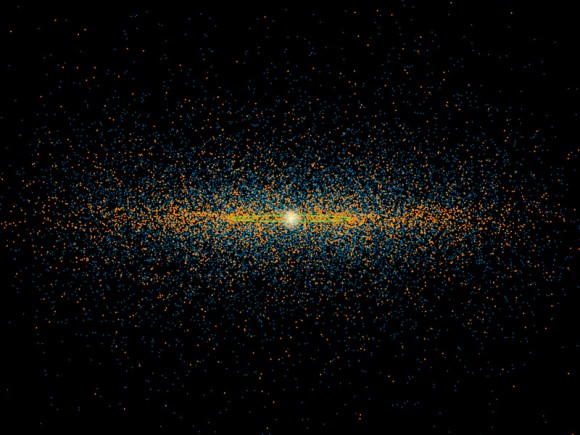Answer: a LOT. And there's new ones being discovered all the time, as this fascinating animation by Scott Manley shows.
Created using data from the IAU's Minor Planet Center and Lowell Observatory, Scott's animation shows the progression of new asteroid discoveries since 1980. The years are noted in the lower left corner.
As the inner planets circle the Sun, asteroids light up as they're identified like clusters of fireflies on a late summer evening. The clusters are mainly positioned along the outer edge of Earth's orbit, as this is the field of view of most of our telescopes.
Once NASA's WISE spacecraft begins its search around 2010 the field of view expands dramatically, as well as does the rate of new discoveries. This is because WISE's infrared capabilities allowed it to spot asteroids that are composed of very dark material and thus reflect little sunlight, yet still emit a telltale heat signature.
While Scott's animation gives an impressive - and somewhat disquieting - illustration of how many asteroids there are knocking about the inner Solar System, he does remind us that the scale here has been very much compacted; a single pixel at the highest resolution corresponds to over 500,000 square kilometers! So yes, over half a million asteroids is a lot, but there's also a lot of space out there (and this is just a 2D top-down view too... it doesn't portray any vertical depth.)
While most asteroids are aligned with the horizontal plane of the Solar System, there are a good amount whose orbits take them at higher inclinations. And on a few occasions they even cross Earth's orbit.

I don't know about you but even with the distances involved it's starting to feel a little... crowded.
You can see more of Scott Manley's videos on YouTube here (including some interesting concepts on FTL travel) and learn more about asteroids and various missions to study them here.



How many hornets are in that nest over there? You won't really know until you whack it with a stick.
Then you will know the truth, and the truth will set your feet in motion.